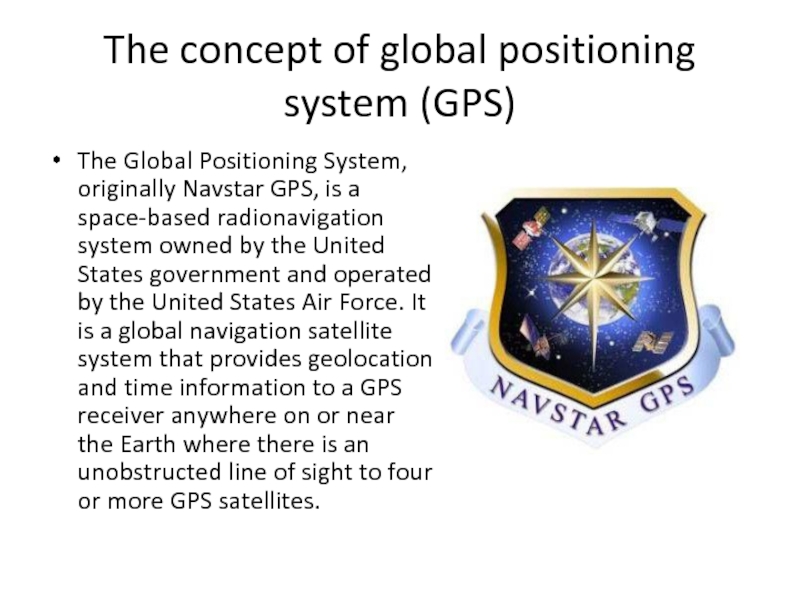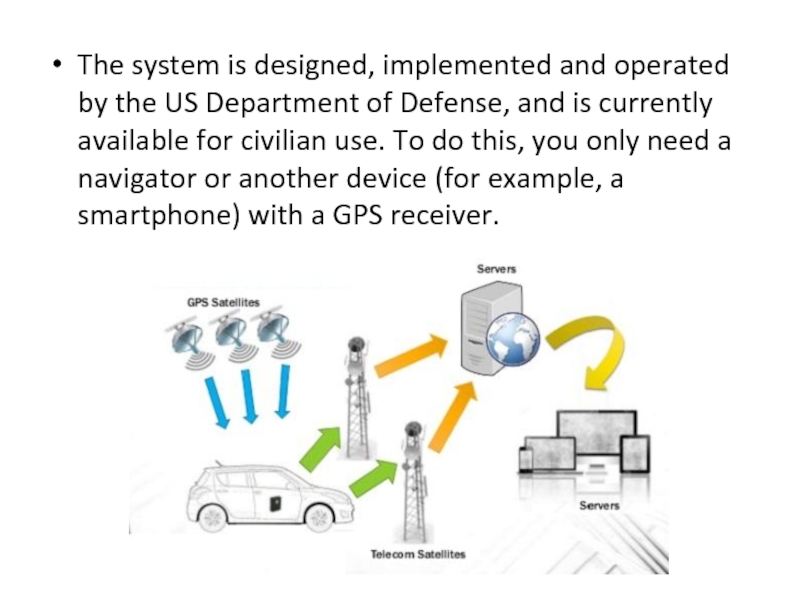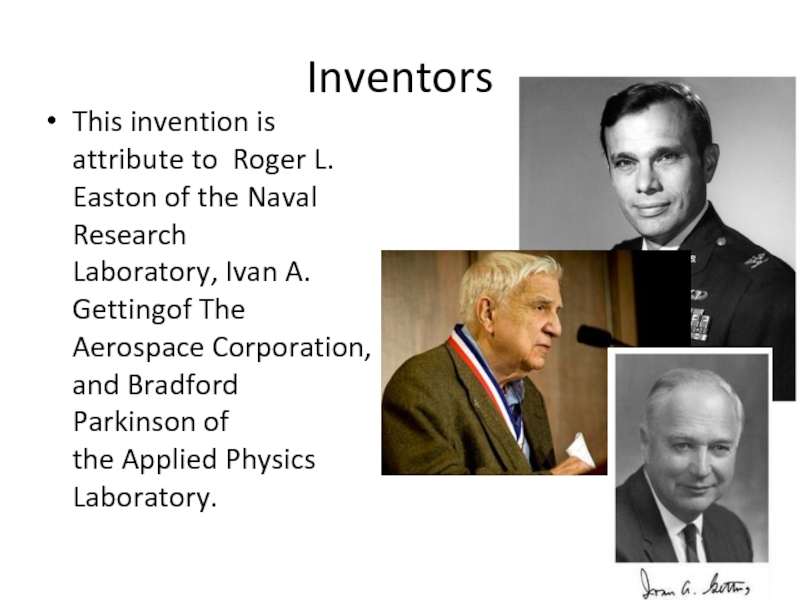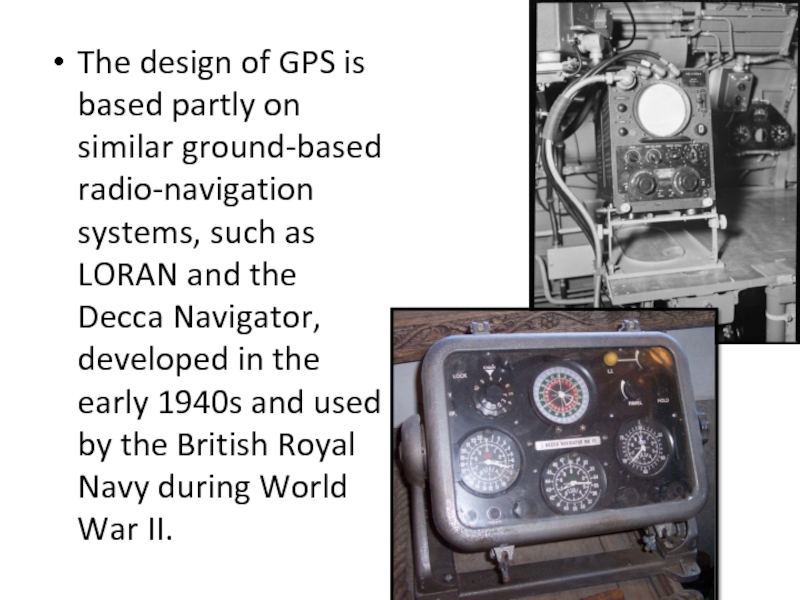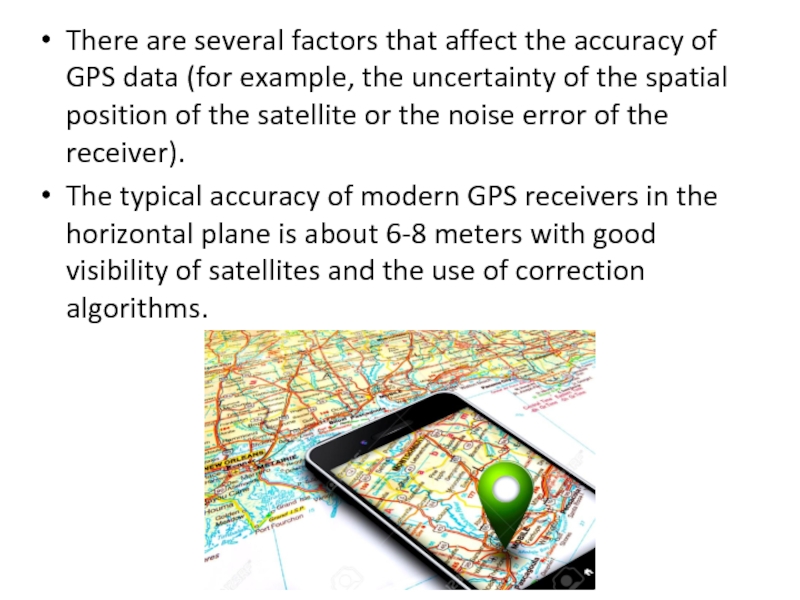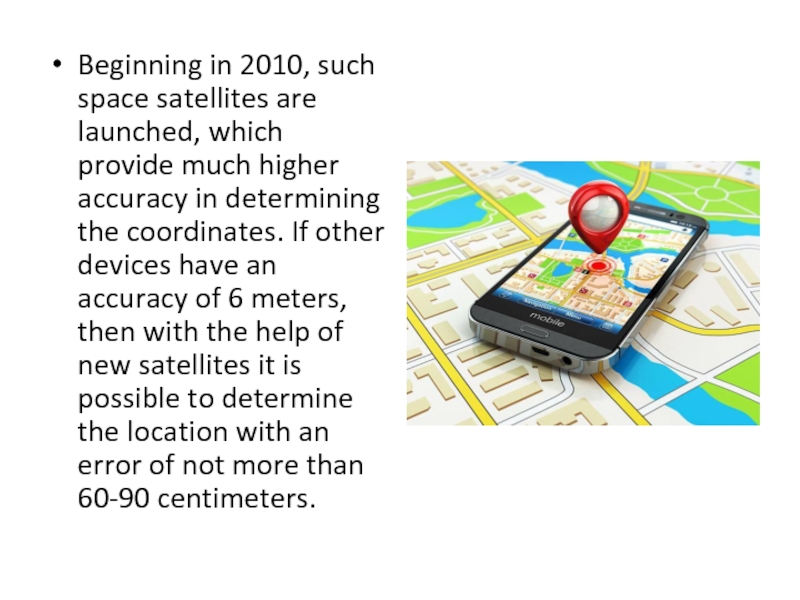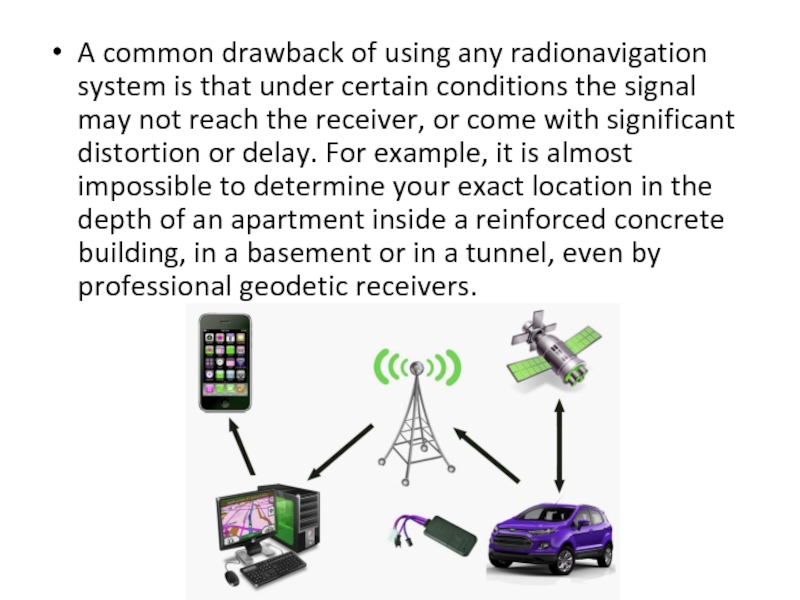- Главная
- Разное
- Дизайн
- Бизнес и предпринимательство
- Аналитика
- Образование
- Развлечения
- Красота и здоровье
- Финансы
- Государство
- Путешествия
- Спорт
- Недвижимость
- Армия
- Графика
- Культурология
- Еда и кулинария
- Лингвистика
- Английский язык
- Астрономия
- Алгебра
- Биология
- География
- Детские презентации
- Информатика
- История
- Литература
- Маркетинг
- Математика
- Медицина
- Менеджмент
- Музыка
- МХК
- Немецкий язык
- ОБЖ
- Обществознание
- Окружающий мир
- Педагогика
- Русский язык
- Технология
- Физика
- Философия
- Химия
- Шаблоны, картинки для презентаций
- Экология
- Экономика
- Юриспруденция
GPS (Global Positioning System) презентация
Содержание
- 1. GPS (Global Positioning System)
- 2. The concept of global positioning system (GPS)
- 3. The system is designed, implemented and operated
- 4. Inventors This invention is attribute to Roger
- 5. The design of GPS is based partly
- 6. There are several factors that affect the
- 7. Beginning in 2010, such space satellites are
- 8. A common drawback of using any radionavigation
Слайд 2The concept of global positioning system (GPS)
The Global Positioning System, originally
Navstar GPS, is a space-based radionavigation system owned by the United States government and operated by the United States Air Force. It is a global navigation satellite system that provides geolocation and time information to a GPS receiver anywhere on or near the Earth where there is an unobstructed line of sight to four or more GPS satellites.
Слайд 3The system is designed, implemented and operated by the US Department
of Defense, and is currently available for civilian use. To do this, you only need a navigator or another device (for example, a smartphone) with a GPS receiver.
Слайд 4Inventors
This invention is attribute to Roger L. Easton of the Naval Research Laboratory, Ivan
A. Gettingof The Aerospace Corporation, and Bradford Parkinson of the Applied Physics Laboratory.
Слайд 5The design of GPS is based partly on similar ground-based radio-navigation
systems, such as LORAN and the Decca Navigator, developed in the early 1940s and used by the British Royal Navy during World War II.
Слайд 6There are several factors that affect the accuracy of GPS data
(for example, the uncertainty of the spatial position of the satellite or the noise error of the receiver).
The typical accuracy of modern GPS receivers in the horizontal plane is about 6-8 meters with good visibility of satellites and the use of correction algorithms.
The typical accuracy of modern GPS receivers in the horizontal plane is about 6-8 meters with good visibility of satellites and the use of correction algorithms.
Слайд 7Beginning in 2010, such space satellites are launched, which provide much
higher accuracy in determining the coordinates. If other devices have an accuracy of 6 meters, then with the help of new satellites it is possible to determine the location with an error of not more than 60-90 centimeters.
Слайд 8A common drawback of using any radionavigation system is that under
certain conditions the signal may not reach the receiver, or come with significant distortion or delay. For example, it is almost impossible to determine your exact location in the depth of an apartment inside a reinforced concrete building, in a basement or in a tunnel, even by professional geodetic receivers.

